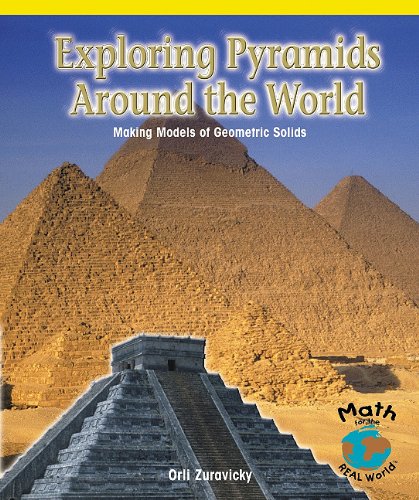-
Extreme Temperatures: Learning About Positive and Negative Numbers
John Strazzabosco
Library Binding (Powerkids Pr, July 1, 2004)Book by Strazzabosco, John R
R
-
Exploring Pyramids Around the World: Making Models of Geometric Solids
Orli Zuravicky
Paperback (Rosen Publishing Group, Jan. 1, 2004)This book shares the makings of geometrical shapes by a fun examination of pyramid constructions throughout the world. Includes 3-dimensional models that allow students to follow and create their own pyramids. R
R
-
The Ancient Civilizations of Greece and Rome: Solving Algebraic Equations
Kerri O'Donnell
Paperback (PowerKids Press, Jan. 1, 2005)This book illustrates how algebraic equations can be solved through a focus on the ancient civilizations of Greece and Rome. Students will simultaneously learn about the culture and history of these ancient world powers while also solving historical-founded questions such as "How many people could fit in the Colosseum?" and "How many gallons of water a Roman aqueduct could carry in a given day?" P
P
-
Where We Play Sports: Measuring the Perimeters of Polygons
Greg Roza
Library Binding (Powerkids Pr, July 1, 2004)Discusses how to measure the perimeters of various types of playing fields, such as football and soccer, by using addition and multiplication. T
T
-
Exploring Australia: Using Charts, Graphs, and Tables
Holly Cefrey
Library Binding (Powerkids Pr, July 1, 2004)Offers maps, charts, and tables to learn about the climate, geography, and wildlife of Australia. R
R
-
Let's Visit Canada: The Metric System
Joanne Mattern
Library Binding (Powerkids Pr, July 1, 2004)Presents an introduction to the metric system along with a description of Canada. M
M
-
Teotihuacan: Designing an Ancient Mexican City : Calculating Perimeters and Areas of Squares and Rectangles
Lynn George
Library Binding (Powerkids Pr, July 1, 2004)Demonstrates methods for calculating the perimeters and areas of square and rectangles by exploring the ancient Mexican city of Teotihuacan. T
T
-
The History of the Maya: Using Computational Skills in Problem Solving
Mary Ann Hoffman
Library Binding (Powerkids Pr, Aug. 1, 2005)This trip to the past teaches students how to use computational skills to resolve word problems. Includes questions that highlight Mayan mathematics, important monuments and observational stations, in addition to the Mayan calendar and writing system. R
R
-
A Trip Around the World: Using Expanded Notation to Represent Numbers
Kerri O'Donnell
Library Binding (PowerKids Press, Jan. 1, 2004)Introduces the decimal system using examples from a trip around the world. V
V
-
The Hubble Telescope: Understanding And Representing Numbers In the Billions
Greg Roza
Library Binding (Powerkids Pr, Aug. 1, 2005)This book illustrates how to understand and represent numbers in the billions through learning about the Hubble Space telescope. Includes a concise explanation of how telescopes operate, a brief history of telescopes, along with colorful photographs accompanied by word problems and explanations. S
S
-
Creating a City Park: Dividing Three-Digit Numbers by One-Digit Numbers Without Remainders
Frances Ruffin
Library Binding (Powerkids Pr, Jan. 1, 2004)Ruffin, Frances E. R
R
-
The Amazon and the Sahara: Using Double Line Graphs and Double Bar Graphs
Orli Zuravicky
Library Binding (PowerKids Press, Jan. 1, 2004)Book by Zuravicky, Orli R
R